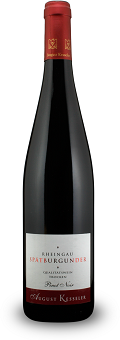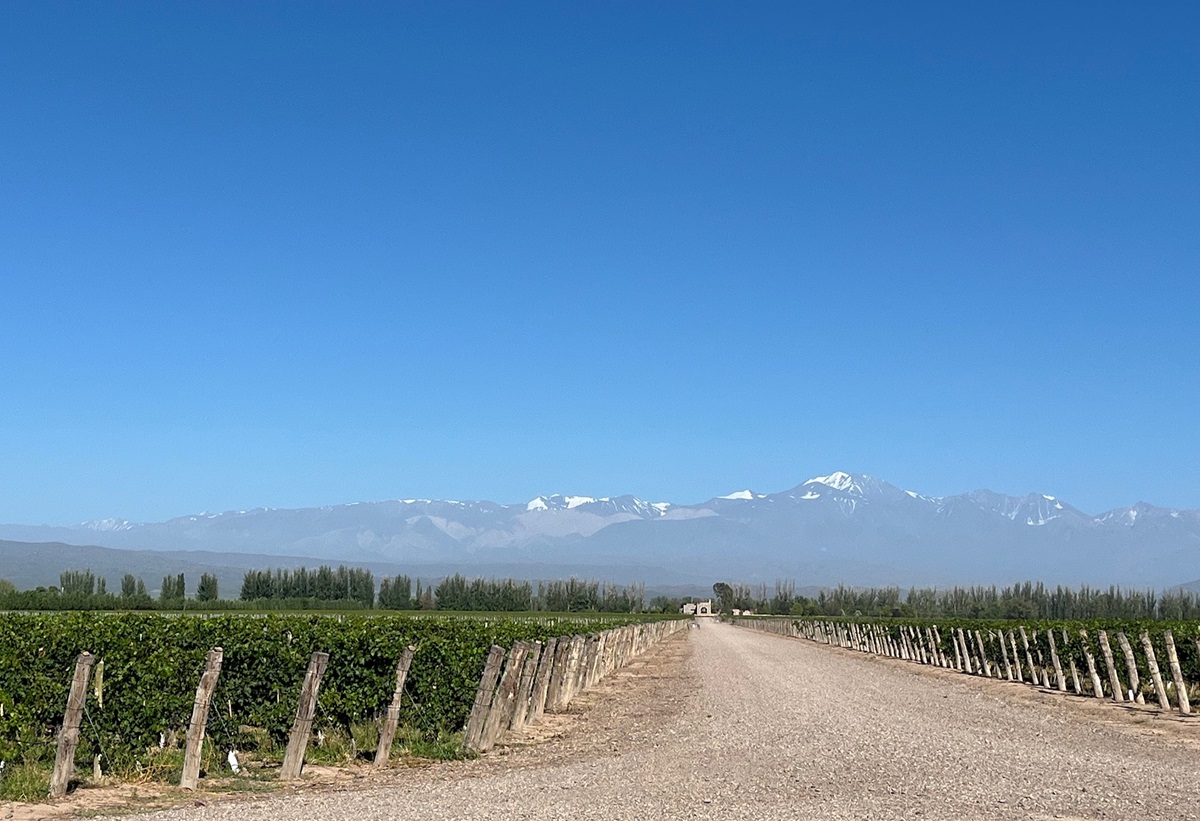GERMANY’S DRY WINE RENAISSANCE

by Rose Murray Brown MW
Published in The Scotsman 31 May 2014
“When I started winemaking in Germany in 1977 everything was sweet, both the whites and the reds”, says August Kesseler. Today Kesseler is one of Germany’s stars in the dry wine renaissance making superb Pinot Noir and dry Riesling on his Rheingau estate, but few have heard of him outside his own country – so his wines still remain underappreciated and undervalued.
Kesseler’s rise to fame as one of Germany’s top winemakers is all the more fascinating when you find he is predominantly self-made. His father was a baker in the town of Assmannshausen on the northern banks of the Rhine. They owned two hectares of very steep vineyards which had been in the family since 1924 – but could not produce enough grapes to keep a family. August’s father worked through the day and night keeping both the bakery and vineyards going.
“When both my parents died early, before I reached the age of 20, I had to make a decision”, says August Kesseler. “I had always fancied a career with cars or horses, but I decided to focus on wine so I enrolled at Giesenheim university for a year to study viticulture and try to make something of our family’s vines. I knew I could not survive with just two hectares, so I had to expand the estate or sell it”, he says.
Kesseler decided to focus on making quality dry wines, at a time when volumes of bulk sweet wines were the order of the day. He was the first in Germany to make top quality Pinot Noir (or Spatburgunder as it is called). Today he owns 22 hectares on prime vineyard sites in Assmannshausen, Lorch and Rudesheim with a thriving business employing 40 people at its busiest time at harvest, with all grapes handpicked and handcarried down off the steep terraces.
Assmannshausen in Rheingau is one of just a very few areas in Germany where Pinot Noir flourishes (the other main region is Baden). The steep slopes and slatey soils in Assmannshausen are some of the warmest vineyards in Germany, thanks to a combination of a reflection from the river, slate absorbing the heat and the man-made slatey terraced walls acting as an amphitheatre trapping the summer heat, helping to ripen the grapes.
“Our town has had a long tradition growing Pinot Noir since Benedictine monks brought the original clones from Clos de Vougeot in Burgundy”, says Kesseler. “Not many people realize that Germany is now the third largest producer of Pinot Noir in the world – that is because we have not always made good wine here”, he says.
In 1977, when August was a teenager the Pinot Noirs were harvested with high acid, malolactic fermentation was halted to retain malic acid and the wines were ‘balanced’ with sweet grape juice. “The result was light, sweet, sour and very poor – so I decided to pick later and let the malolactic go through and ferment the Pinot to dryness”, he says. Today Assmannshausen Spatburgunder is Germany’s most elegant and spiciest – different from the fruitier fuller-bodied styles found in southern Baden which bear more resemblance to Burgundy.
“Fifteen years after I started with Pinot Noir, I then fell in love with Riesling too”, says Kesseler. So he now focuses on dry, off dry and quality sweet Rieslings from his vineyards in Lorch to the north of Assmannshausen and Rudesheim to the east in the heartland of the famous Rhine vineyards.
As he reeled off his successful Pinot Noir vintages (2002, 2004, 2005, 2007, 2012), Kesseler admitted that growing vines in Germany is now much easier for him than for his father and grandfather, who struggled to ripen their grapes.
He now also has time to focus on his earlier interests. He spends his spare time, when not tending his steep slopes, riding his horses ‘western-style’ – and he can now afford to indulge in his love of cars.
TASTE TEST:
DRY WHITE:
RIESLING KABINETT ‘TROCKEN’ 2012 August Kesseler
A wine to convert any Riesling lover to try more German examples. Beautifully clean bright citric fruit, light minerally core, vibrant natural acidity and long dry crisp finish.
Food match: Kesseler recommends serving with light summer salad, quiche, salmon or mackerel fishcakes
Alcohol: 12%
 RED:
RED:
PINOT NOIR ‘TROCKEN’ 2010 August Kesseler
A very pretty light Spatburgunder with elegant spice notes and bright natural acidity at an attractive price for German Pinot.
Food match: Kesseler recommends serving with fresh creamy goats cheese, roast pork, pigeon or venison
Alcohol: 13%
SWEET WHITE:
LORCHER SCHLOSSBERG RIESLING AUSLESE 2011 August Kesseler
Gorgeous bright fruits, gentle honeyed sweetness on the palate, minerally undertones, mouthwatering acidity, finishes long and dry: a very fine dessert wine from his northerly Lorch vineyards.
Food match: Kesseler recommends serving this young Riesling with fruit dessert, then blue cheeses or foie gras when it has matured.
Alcohol: 11.5%
August Kesseler wines are available exclusively from Justerini & Brooks www.justerinis.com; also available in select restaurants.
wine tastings
The perfect gift for the wine enthusiast in the family. Rose does In-person tastings too.
cellar advice
Rose does cellar valuations for private clients, valuations for insurers & bespoke portfolio management.
Related stories
March 31, 2024
By Rose Murray Brown MW Published in The Scotsman 30 March 2024 On 2 February 1659, the first wine made from grapes grown in South Africa was crafted by the Governor of the Cape, Jan van Riebeeck. He had planted vines four years earlier in the Company’s Garden near Cape Town from cuttings imported from France. Van Riebeeck’s first
March 24, 2024
By Rose Murray Brown MW Published in The Scotsman 16 March 2024 Heatwaves and bushfires were very much on the agenda when I visited Chile last month as winemakers prepared for their 2024 harvest in blistering heat and drought, with a plume of smoke from the devastating fires lingering over coastal hills. Heat and drought are the greatest challenges
March 23, 2024
By Rose Murray Brown MW Published in The Scotsman 9 March 2024 I have two glasses of Malbec in my hands from the same high-altitude vineyard in Uco valley in Argentina. I am in the Catena Institute of Wine in Mendoza with winemaker Agustin Silva. He has asked me to taste the two wines, both from the 1500m high



